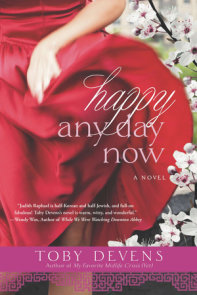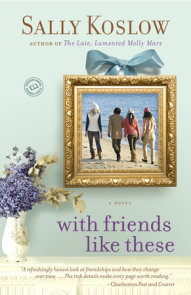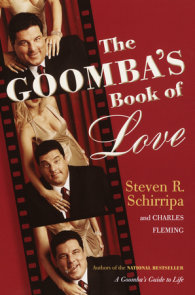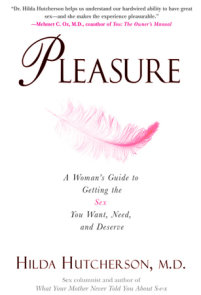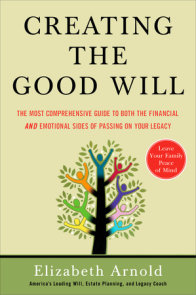READERS GUIDE
A Conversation with Toby DevensQ. What does a typical writing day look like for you?
A. My day starts early because I tend to wake up raring to go. I’m a morning person, although once I’m well into the story I write whenever and wherever. For me, it’s all about momentum. Once I’ve started, the endorphins kick in, and it’s like a runner’s high. I’ll be at it for hours at a stretch, rousing myself only when I realize my tush has fallen asleep or I’ve skipped breakfast and lunch. And when I’m finished for the day, I play a trick on myself (and fall for it every time). I don’t stop at the end of a chapter. I pause at an exciting point along the way so that I get a jump-start when I next pick up the narrative thread.
I do try to fit in time with friends for a power walk or a cup of coffee. Writing is an isolating experience and my theory is you need to get out in the world if you’re going to write about it. Then again, I’m always writing, either on a keyboard or in my head—playing with the characters, nudging the plot along. When I’m working on a novel, I feel as if I’m living in two worlds. Half of me resides in a brick-and-mortar home in Maryland, while the other half is hanging out in a never-never land of my own making, in this case a lovely shore town named Tuckahoe Beach.
Q. Is Tuckahoe a real place, or based on a real town?
A. It’s real to me and I hope to my readers, but, in truth, it’s as imaginary as Shangri-La. There is no town named Tuckahoe in Maryland, though there is a Tuckahoe River and a Tuckahoe State Park on the state’s Eastern Shore. Many sites in the area carry the names of Native American tribes. I chose Tuckahoe because I liked the rhythm of the word, which some scholars think is from the Algonquin language. My fantasy Tuckahoe Beach isn’t based on any single place but was inspired by the resort towns along the Delmarva coast, where I spent a lot of time (poor me!) soaking in the atmosphere. Sufficiently soaked, I constructed a setting tailored to the needs of the story. And I had a wonderful time designing that beach town of my dreams. As I created it, I fell in love with it.
Q. Did the idea of the book begin with the setting or with the character?
A. I was standing on the balcony of a friend’s condo. The sky was golden and the sea was mirror smooth. Ten minutes later, storm clouds rolled in. I watched transfixed as the first spatters pocked the sand below. By the time the wind had picked up and lashes of rain chased the sunbathers, I was thinking, I want to write this. The beach itself was already a fabulous character in my mind—beautiful, seductive, temperamental, and able to cause all kinds of havoc—and it became a character in the book. So to answer the question: both.
Q. Do you model your characters on people you know, on your own experiences? You write in first person, so how much of your protagonist is you?
A. I love a T-shirt my daughter gave me that warns, “Be careful what you say around me. You might appear in my next novel.” Funny. But not really true. I wish I were talented enough to replicate in two dimensions some of the characters I know in three. Of course, if I could do that, I’d never confess to it. As for my own experiences, there’s probably some of me in all of my characters, because to bring them to life I have to practically inhabit them. So, in my novels, I’ve been: a surgeon whose husband left her for a man, a Korean-Jewish cellist who suffers from stage fright, and now a dance therapist and owner of a ballroom and Zumba studio. Mind you, these are just the leads. Figure in the supporting players and I’ve been both genders, all ages, and I’ve worked at occupations as varied as molecular biologist and fish salesman. What an interesting life—lives!—I lead.
Q. In Barefoot Beach you write about dance-and-movement therapy, operating a repertory theater, owning a coffee shop, artificial insemination, wounded warriors, and military working dogs, among other topics. How do you research all these subjects?
A. The story may be fiction, the characters invented, but I firmly believe the facts should be authentic. That is a matter of respect—for the reader, for the work, for myself. When you write fiction you’re casting a spell (the poet Samuel Taylor Coleridge called this compact between poet or novelist and reader “the willing suspension of disbelief”), but one false note, one breach of trust, and the spell can be broken. If the eye stops on what may be a teensy mistake but appears to the reader as a glaring blunder, she’s tugged from the world I created. It’s important to get it right, and research helps do that.
On a more personal level, research is a learning experience for an author and I relish it. In my first novel, Kat Greenfield, a fiber artist, employs a technique I knew nothing about. Luckily there was a talented weaver nearby willing to talk to me. More than just talk. Carol sat me down at her loom and led me through the basics. Such fun! So much information!
In Happy Any Day Now, my protagonist is a cellist. I don’t play a note, but I learned how an orchestra operates. I interviewed musicians, gathered info on their online forums, then had performing cellists review the manuscript for accuracy. And the book, with insider details, was richer for it.
Nora Farrell is a dance therapist and teaches Zumba and ballroom because I took tap and ballet as a kid, Zumba as an adult, and have always loved to dance. But what I thought of as recreation became Nora’s profession after I spoke to someone whose fine-motor coordination, damaged by a neurodegenerative disease, was being improved by dance therapy sessions. Also, in a dizzying twist of fate, I discovered—only after I’d chosen Nora’s career and begun my research—that an iconic figure in the dance movement community lived a mile from my home and the national organization was located around the corner. How could I not have taken that for a sign? I spent hours interviewing the literal movers and shakers in the field, who shared their knowledge and experience.
Sometimes landing a great resource takes searching and a bit of persuading. Sometimes it’s as quick as clipping a coupon. For the ballroom scenes, I snapped up a discount offered by a national chain of dance studios, took lessons, interviewed the instructors and the manager . . . and polished my tango.
On my research quest, I rely on the kindness of strangers, a number of whom have become friends. I’m grateful to all who generously shared with me.
Q. Readers often like to connect with authors via social media. Is that something you enjoy?
A. I do enjoy it, because I so appreciate hearing what they think and feel about my books, and about other topics. Maybe I’m slightly biased, but they seem to be a particularly bright group. Of course, communicating in person, at appearances, signings, or book club meetings, is ideal. We can talk face-to-face and in some depth about all kinds of issues, some of which I address in my novels. But social media gives me a chance to reach out to huge numbers of readers, current and prospective, and have an immediate, sometimes instant exchange on Facebook or Twitter. I can converse one-on-one with a reader, and the world—virtually the world—can watch or join in. Here’s to modern technology!
Q. You’ve written many articles. Which do you prefer, fiction or nonfiction?
A. These days, my heart belongs to fiction. In the long form, it’s more challenging to bring off than a factual article or an opinion piece. The novelist has to create a universe from scratch, then keep the planets in motion and carefully track them for hundreds of pages. And yet what luxury to have the space to develop fully realized characters, play the themes throughout, and wind a plot from problematic start to satisfying ending. Besides, I get to write dialogue, which is a pleasure. Dialogue emerges more spontaneously than narrative for me, so some of my favorite lines in all novels, mine included, are uttered by characters. In Barefoot Beach, I’m thinking of Margo’s witty and cutting ripostes, Merry’s rebellious teenage slang, Jack’s verbal duels with his mother.
And how’s this for a fringe benefit? Because of its intricacy, its length, and its demand for the author’s undivided attention, a novel, whether you’re reading it or writing it, allows you to escape from your familiar environment. (Even if there’s no place like home, it’s fun to travel.) What other profession, with the possible exception of acting, allows its practitioners the opportunity to exist, for most of their waking hours, in a world completely different than the one that actually surrounds them? And mine, unlike the actor’s, is of my own making. I write the lines. I design the sets. I invent adventures and determine the outcomes. I run the show. Not a bad way to spend a day . . . or the greater part of a life.
Q. What are you working on now?
A. Two projects. I’m halfway through a novel about a family that welcomes an immigrant cousin into their home and the ways in which the search for his missing sister reverberates through their lives. Two settings—Brooklyn and Budapest—provide the background, and the story incorporates some of my favorite themes: mother-daughter relationships, romantic and sexual complications, the powerful bonds of female friendship, the immigrant experience, and how the past invades the present with unexpected consequences. The book is part history, part mystery, a tale of love, loss, and redemption, and, most of all, secrets—many secrets. And surprises.
But then there’s the beach, which is so alluring, so sultry, whether it’s Fire Island, Malibu, or Cannes. Another story currently percolating unfolds on beaches around the world as it follows my protagonist’s adventures and misadventures. She . . . No, I’ll stop there. I don’t want to talk it out; I want to write it out.
Questions for Discussion
1. A major theme of Barefoot Beach is the marvelous power of female friendship. Has there been a time when a woman friend or a group of friends helped get you through a life-changing or extraordinarily difficult situation? Also, compare the nature of female friendship with the bonds men build with one another.
2. Margo tells Nora, “I’m not supposed to be kind. I’m your best friend. I’m supposed to be honest.” Do you agree or disagree?
3. How might the story be different if Jack was a girl instead of a boy?
4. How do you feel about children of sperm donors, or adopted children, contacting their biological parents?
5. Nora, Margo, and Emine are close friends despite very different backgrounds. Have you ever experienced obstacles to friendship because of different ethnicities, religions, or upbringing?
6. Do you believe that Margo will be able to let go of the episodes in her past that haunt her and regain the trust she once had in her marriage? Is it possible to trust fully again—in friendship, family, work, or love—after you have felt betrayed?
7. Is there someplace in your world where the surroundings impart a sense of peace and happiness in the way Nora finds joy and relaxation at Barefoot Beach? If your access to it were threatened, what might your reaction be?










